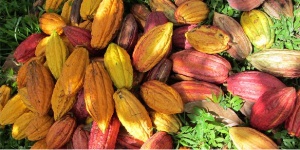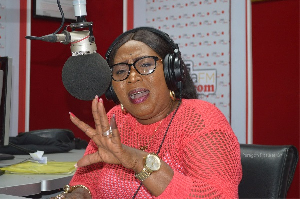...pays back US$1.7 billion
The Ghana Cocoa Board (Cocobod) says it is ready to sign a US$1.8billion syndicated loan from a consortium of banks on the world financial market, to enable it procure about 850,000 tonnes of cocoa beans for the 2015/2016 crop season.
The final signing for the syndicated loan is expected by the middle of this month. The Board has fully repaid the US$1.7billion loan it raised from a consortium of banks in 2014 to finance cocoa purchases in the 2014/15 crop season.
“We took a loan to buy coco and as off today we don’t owe any bank; we have fully paid and so for us we are going to sign the next loan,” the Public Affairs Manager of Cocobod, Mr. Noah Amenyah told B&FT that the 2014/15 crop season loan attracted an interest of one percent within the period.
“The rate was one percent and that was very good for a facility of this nature. I am not sure you can get such a rate anywhere currently,” adding that completion of the repayment will position the board to make another entry into the global financial market to raise funds for supporting cocoa purchases in the 2015/16 crop season.
The Board is expected to raise about US$1.8billion to fund the purchase of about 850,000 tonnes of cocoa beans during the 2015/2016 crop season, which is the amount expected to come onstream in the middle of September 2015.
Mr. Amenyah, expressing confidence of producing the needed quantity of beans to pay off the US$1.8billion loan it intended to secure, estimated that crop production will rebound this year after a sluggish performance in the last season.
“I went to the farms in the Eastern Region and the flowers look promising for harvesting in the main crop season; there were flowers on the trees all over.
“From May the rain has been very encouraging; it is not too heavy and that is why the cocoa trees are comfortable; and last year production was low because the trees were fatigued.
“From our estimates, we will be able to produce enough to pay off the amount we want to raise this season. Generally, the output fluctuates. When you have a bumper harvest this year you don’t expect the output to be so strong the following season, but because output was not too strong last year we expect it to rise this season,” he said.
He attributed the fluctuation in output to the aging nature of cocoa farmers and trees, increased number of diseased cocoa trees, and illegal mining which competes with the cocoa plants for land.
“Fortunately, we have interventions in place to help correct some of these challenges. The cocoa rehabilitation programme has been ongoing and the success is already beginning to show. We have already started the free distribution of 50 million improved seedlings to replace aged and diseased trees,” he said.
Mr. Amenyah said the board is also mentoring some youth in cocoa production to help replace aging cocoa farmers, which has been identified as a major challenge to cocoa production.
“Already, over 20,000 youth farmers have registered and are being assisted to cultivate various acreages of cocoa to augment those operated by the aged,” he said.
The Cocobod has since the 1992/3 cocoa season resorted to the international market in raising money for funding the purchase of cocoa beans from farmers through licenced buying companies (LBCs).
The amount raised has risen from US$140million in the maiden attempt to peak at US$2billion in the 2010/11 cocoa season, the period the country grossed over one million metric tonnes of the crop.
Business News of Saturday, 5 September 2015
Source: B&FT

















